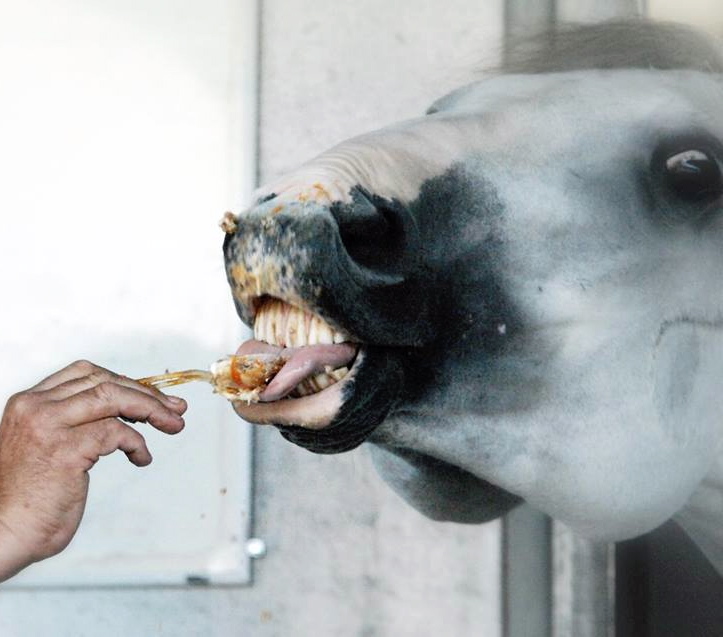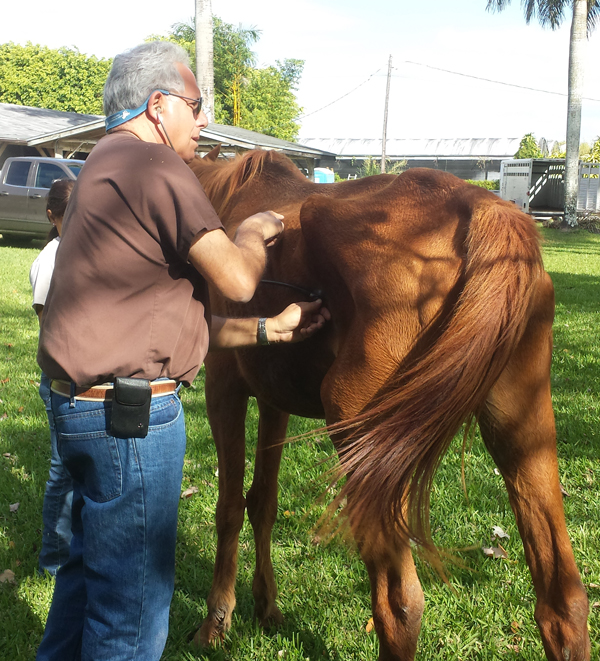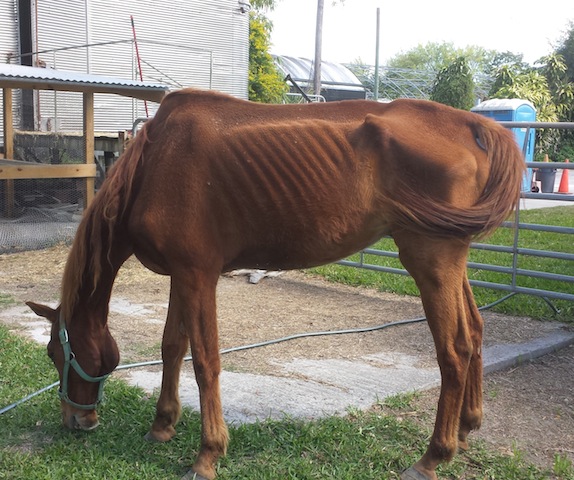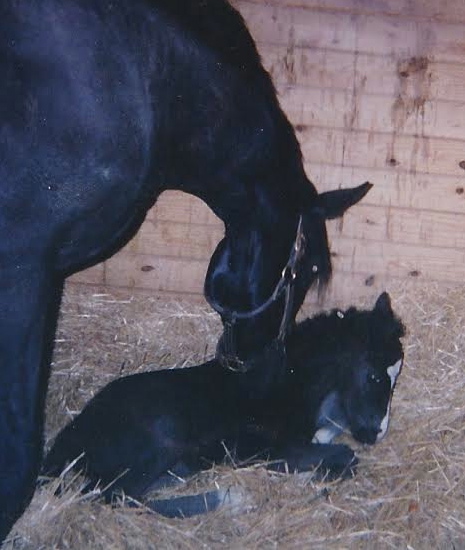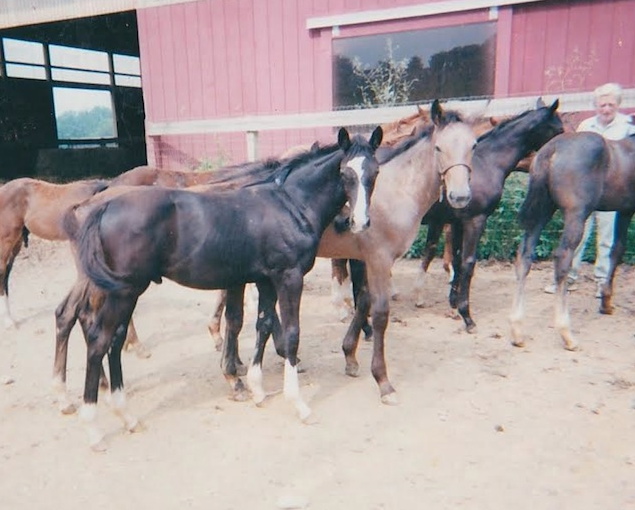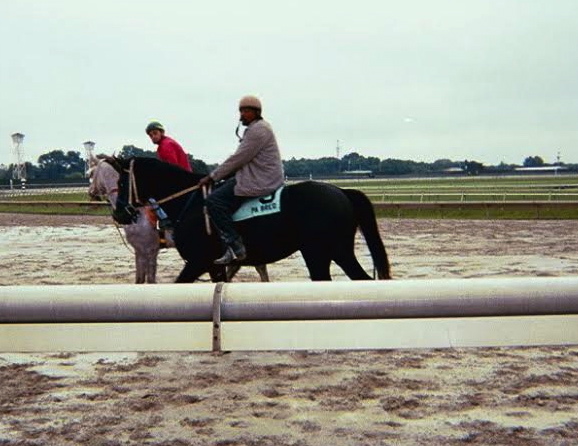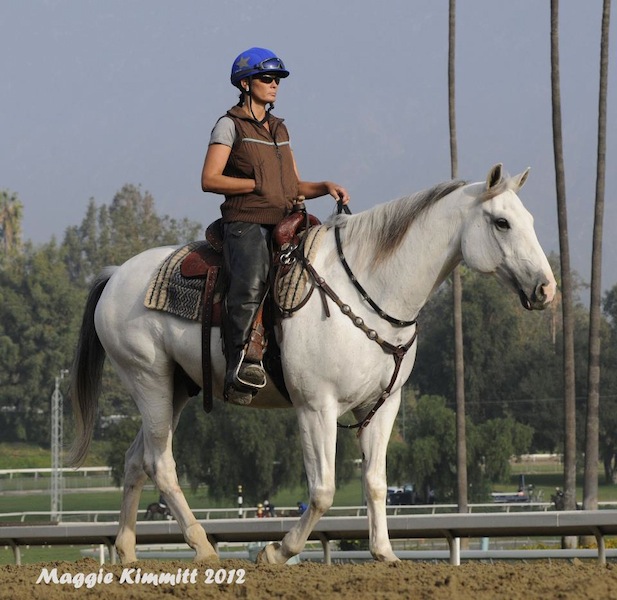
Donna Keen, president of Thoroughbred charity Remember Me Rescue, rides Bridleless Wyatt on the track. Photo by Maggie KimmittNo matter how famous the racehorse or esteemed the racecourse, when the pretty bridleless gelding of unknown origin steps onto the track, he steals the show.
No matter how famous the racehorse or esteemed the racecourse, when the pretty bridleless gelding of unknown origin steps onto the track, he steals the show.
That’s right, Wyatt the white gelding, ridden without bridle by Thoroughbred racehorse owner and rescuer Donna Keen, even stops to pose for pictures, just like the big stars.
And in the universe of the social media world, where fans follow him, he is a star.
Rescued from a kill buyer when he was 2, and taught to go bridleless, even while working alongside frisky racehorses, Wyatt is a wonder wherever he goes.
In this week’s Clubhouse Q&A, Keen, the president of Texas-based Thoroughbred charity Remember Me Rescue, explains how she came to be ponying Thoroughbreds and chasing down runaways on a mysterious gray horse who knows his job cold, and can quell even the spookiest racehorse with a curled lip and a look.
And he does it all without being yanked by reins and a bit.
Q: How did Bridleless Wyatt come into your life?
I bought him from a killer auction, when he was an unbroken two-year old colt. I was told he was a Paint, and he was such a pretty horse I didn’t want him to go on to slaughter.
I don’t know anything about his background. He has an oval brand on the side of his face, and another brand, a V, on his hip. But we never did figure out how he got to that auction.
Q: You broke him at age 2 and started working with him on the track at age 3. Why did you decide to go bridleless with him?
He’s a really handy horse and learned really easily. I taught him to make basic dressage moves, like the half pass, from my seat. So going bridleless just made sense to me. You can teach a horse to move off your leg in a matter of minutes. It’s not hard to teach a horse what we’ve taught Wyatt. And they like it. Their gait is more natural, because they move more freely, the way they would if they didn’t have a rider.
Q: But what about when you have to spring into action to catch a loose horse or “pony” a recalcitrant racer?
We were at Santa Anita two years ago and I was sitting there gabbing with some people, when a horse spooked and started running backwards toward the crowd. I wasn’t paying attention, but Wyatt was. The next thing I knew, Wyatt just jumped toward him, and I had the (spooking) horse in my hands. Wyatt really knows his job.
We’ve also assisted in catching runaways. We’ve done everything. Wyatt is not afraid.
Q: You’ve said he even seems to communicate with other horses better without the bridle.
If a horse is acting up, he looks over at them and squints his eyes, curls his lip and flares his nostrils. I don’t know what he’s saying, but whatever they’re doing, they stop.
Q: Where can people see Wyatt, and what do you hope to show by riding him bridleless?
He works mostly at Lone Star Park right now, but he’s been everywhere, including Santa Anita, Del Mar and Keeneland. He’s well traveled.
What I want people to understand is that horses are not dumb animals. We want to show people how smart they are. And people notice him. Wherever we go, he draws a crowd. And he stops and pricks his ears and poses for the camera.
Author’s note—This was a fan favorite and I felt like re-sharing it today!

